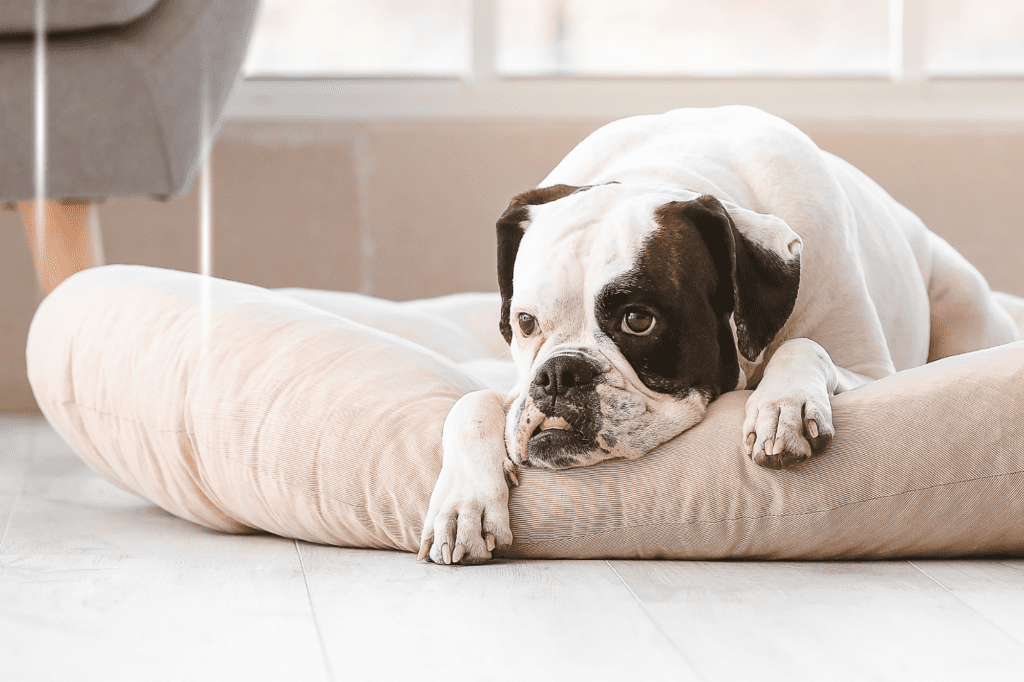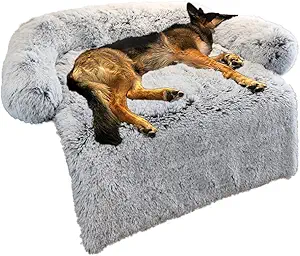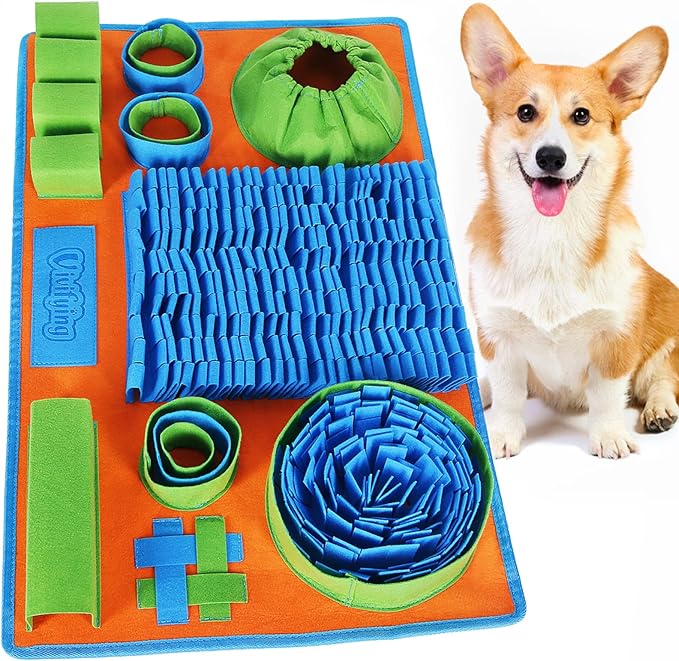This “The Complete Guide to Leaving Your Dog Home Alone” post may contain affiliate links, which means I’ll receive a commission if you purchase through my link, at NO EXTRA COST TO YOU
The Complete Guide to Leaving Your Dog Home Alone
Leaving your dog home alone requires planning and care. A smooth experience for both you and your furry friend relies on making your home a safe, comfortable environment. In this guide, you’ll find effective strategies, tips, and suggestions that help your dog stay calm and happy when you’re away.

1. Understanding Your Dog’s Needs
Each dog has different needs when left alone. While some dogs enjoy time on their own, others feel anxious or lonely. Factors like breed, age, and personality impact how well your dog manages alone time. Puppies, for instance, need more supervision than older dogs. Similarly, active breeds may become restless without mental and physical activities. By understanding your dog’s unique needs, you set the foundation for a calm and positive experience while you’re away.
2. Setting Up a Comfortable Environment
Creating a safe, cozy environment makes a big difference in your dog’s well-being. Start by designating a secure space where your dog feels relaxed. Many owners choose a quiet room or a corner with a dog bed, a few toys, and maybe a blanket. Avoid leaving items within reach that could harm your dog, such as electrical cords, small objects, or household cleaners.
Consider investing in a crate if your dog has been crate-trained. A crate provides a safe, den-like space where your dog can feel secure, especially if you’ve made it cozy with soft bedding and a favorite toy.
3. Providing Mental and Physical Stimulation
Boredom can lead to destructive behaviors. To keep your dog content, ensure they receive plenty of mental and physical stimulation before you leave. Try taking your dog for a brisk walk or playing a game of fetch. A tired dog is a calm dog.
Interactive toys, like puzzle feeders or treat-dispensing toys, help keep your dog’s mind occupied while you’re away. These toys encourage problem-solving and provide a rewarding experience that prevents boredom.
4. Gradual Training for Alone Time
Dogs thrive on routine, and sudden, long absences can lead to stress or anxiety. Start by leaving your dog alone for short intervals, gradually increasing the time you spend away. Begin with 10-15 minutes, and then extend the time as your dog becomes more comfortable. Practicing this approach helps your dog understand that you always return, reducing any separation anxiety.
5. Managing Separation Anxiety
Separation anxiety affects many dogs. If your dog shows signs of anxiety when left alone, try introducing calming techniques. Leaving behind a piece of clothing with your scent or playing calming music helps some dogs relax. You can also use pet-safe aromatherapy or calming sprays.
Dogs with severe anxiety may benefit from consulting a professional trainer or a vet. Specialists offer customized solutions that can make a world of difference.
6. Creating a Schedule and Routine
Consistency plays a huge role in helping your dog adjust to alone time. Dogs find comfort in predictable routines, especially with feeding, playtime, and exercise. Establish a routine that includes time for each activity, so your dog knows what to expect throughout the day.
Before leaving, try following a calming departure routine. Avoid making a big fuss, as this can increase anxiety. Simply say goodbye calmly and leave without hesitation. This approach reassures your dog that your departure is a normal part of the day.
7. Using Technology to Stay Connected
Modern technology offers many tools for monitoring and interacting with pets remotely. Pet cameras let you check on your dog during the day, providing peace of mind. Some models even allow two-way communication, so you can talk to your dog and offer reassurance. Automated treat dispensers can be programmed to release treats at intervals, providing small moments of joy and breaking up your dog’s day.
8. Getting Help When Needed
Sometimes, especially on long workdays, your dog may need more than just toys or a routine. Consider asking a friend, family member, or neighbor to drop by and check on your dog. A quick walk or visit can brighten your dog’s day and break up a long period of solitude.
Hiring a pet sitter or dog walker also provides your dog with some companionship and exercise. This option is especially helpful if you work long hours or have an active dog that requires frequent exercise.
9. Recognizing Signs of Distress
Watching for signs of distress is essential for a smooth transition to alone time. Common signs include excessive barking, whining, destructive behavior, or accidents indoors. If your dog consistently shows these behaviors, consider adjusting your approach or seeking professional advice. Early intervention can prevent these signs from developing into long-term issues.
10. Preparing for Extended Time Away
When leaving your dog alone for extended periods, extra preparation ensures comfort and safety. Make sure your dog has plenty of fresh water, using a spill-proof bowl or pet fountain if possible. Food can be left in a slow-feeding bowl to prevent overindulgence.
Consider setting up automated systems for feeding and watering, especially for trips lasting more than a few hours. Pet-safe heating or cooling pads offer added comfort during extreme weather.
11. Practicing Self-Care for Your Dog’s Well-Being
A well-cared-for dog thrives, even when left alone. Regular vet checkups, grooming, and attention to diet ensure your dog feels good physically and emotionally. A healthy dog adjusts better to time alone, as their physical and mental needs are already met.
Creating a strong bond with your dog outside of alone time also matters. When you spend quality time together, your dog feels secure and less likely to experience separation anxiety.
12. Preparing for Success
A successful experience when leaving your dog home alone relies on practice and observation. Assess how your dog handles each phase, and make adjustments as needed. Your dog’s comfort and happiness reflect the care and consideration you put into their routine.
By following these steps, you empower your dog to handle alone time with confidence. A peaceful, secure environment makes every moment apart easier for both of you, creating a harmonious balance between your daily responsibilities and your bond with your dog.
This guide offers everything you need to ensure a stress-free experience for you and your dog when it’s time to leave the house. Each strategy helps build a happy, well-adjusted dog ready for moments of solitude.

Household Hazards for Pets: What You Need to Know
As pet owners, we want to create a safe and loving environment for our furry friends. However, many household items and conditions can pose significant risks to their health and well-being. In this blog, we will explore common household hazards, how they can affect your pet, and practical steps to minimize these risks.









